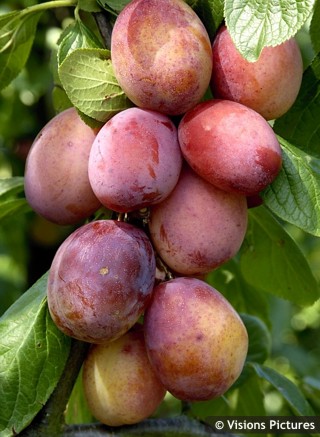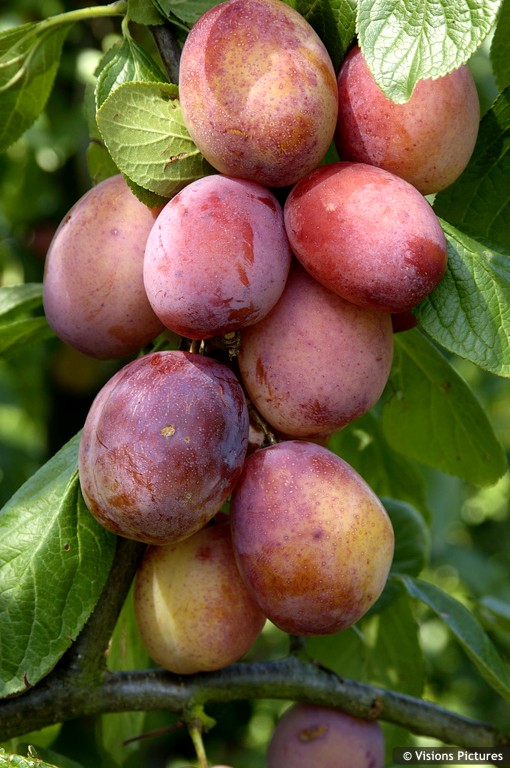Prunus domestica 'QUEEN VICTORIA' plum
size/type
small tree,small tree
usual height
2-3,5m
usual width
2-3m
leaves
deciduous broadleaf
colour of leaves
flowers
showy
colour of flowers
blooming time
May-May
location
full sun
USDA zone (lowest)
5 (down to -29°C)
winter protection
for zone 5+6

for zone 7

categorized
Description of the plant:
Queen Victoria is probably the most popular plum with red skin. It is a heavy cropper, producing typically egg-shaped fruit with yellow skin decorated with numerous red blotches. It is very sweet and juicy, stone-free. The best way to eat them is fresh off the tree, obviously, but they can be processed into jams and canned, even dried and frozen. A red plum preserve is divine and if you think that the plum puree is not sharp enough you can add a little bit of lime juice, or mix a few cranberries into a bottle. Along with pears and apricots, plums are the sweetest and healthiest fruit of our climate. They contain up to 16g of sugars in 100g of fruit which can be compared to sugar contents in mangoes. They are also high in potassium, calcium, phosphorus, and contain up to 35 micrograms of vitamin A (carotens) which can only be topped by apricots from amongst large fruit.
It flowers in May and is self-fertile which means it does not need another plum tree to bear fruit, and on the other hand pollinates other plum trees with its pollen, e.g. most Reine-Claude varieties. It can be kept smaller by pruning. Young trees should be pruned to help the branches get strong enough to hold the fruit. Fully hardy to -27°C.
Last update 11-02-2013
QUICK PRICE OVERVIEW
CURRENTLY SOLD OUT














